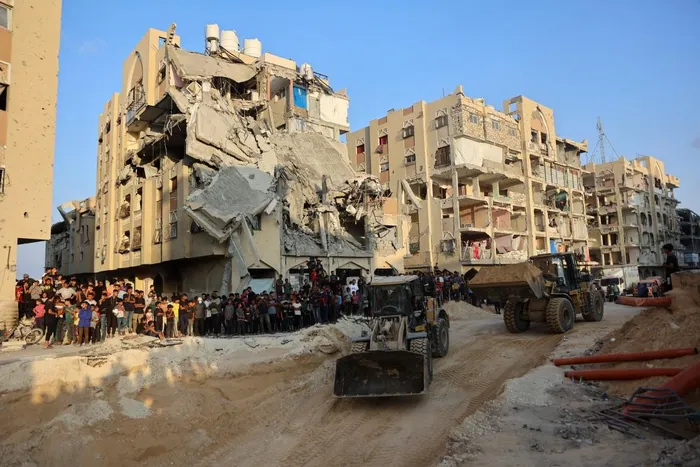Gaza a complete disaster zone
OPINION

Gaza’s infrastructure has been utterly destroyed, requiring reconstruction to begin from ground zer
Image: Omar Al-Qattaa/ AFP
The consequences of the Israeli regime’s genocide in Gaza, backed by the United States, are far more devastating than the US atomic bombings of Hiroshima and Nagasaki in 1945, leaving Gaza a complete disaster zone. Even if the current so-called ceasefire holds, which remains doubtful, rebuilding will be painful and long-term.
Gaza’s infrastructure has been utterly destroyed, requiring reconstruction to begin from ground zero. At a talk on 17 October at Nizamia Hall in Pietermaritzburg, Dr Fatima Hendricks, a Capetonian activist aboard the Global Sumud Flotilla, posed a haunting question: What will construction teams find when they begin clearing the rubble?
Recovery efforts will inevitably uncover the grim truth beneath the destruction—the bodies of thousands of innocent civilians, including children, buried under the ruins.
Beyond the human cost lies another grave danger: unexploded bombs and live ammunition scattered throughout the debris.
Recovery must go beyond basic humanitarian aid. The Palestinian people, the indigenous population, must lead the restoration process. This is not only about rebuilding structures but also about pursuing justice, defending human rights, and ending the brutal Israeli occupation.
What’s needed is a genuine truth and reconciliation process, one that holds perpetrators accountable and amplifies the voices of oppressed Palestinians, not a symbolic or diluted version like South Africa’s.
Mohamed Saeed, Pietermaritzburg